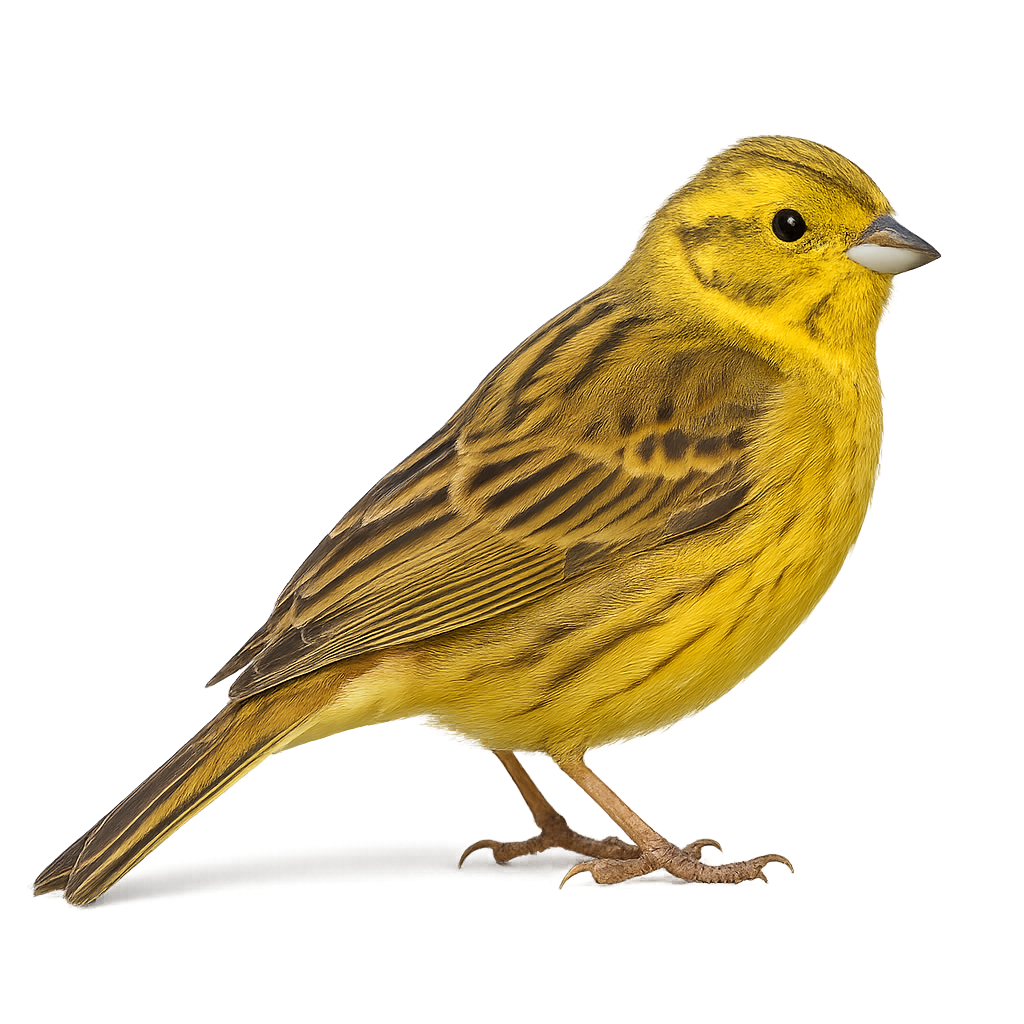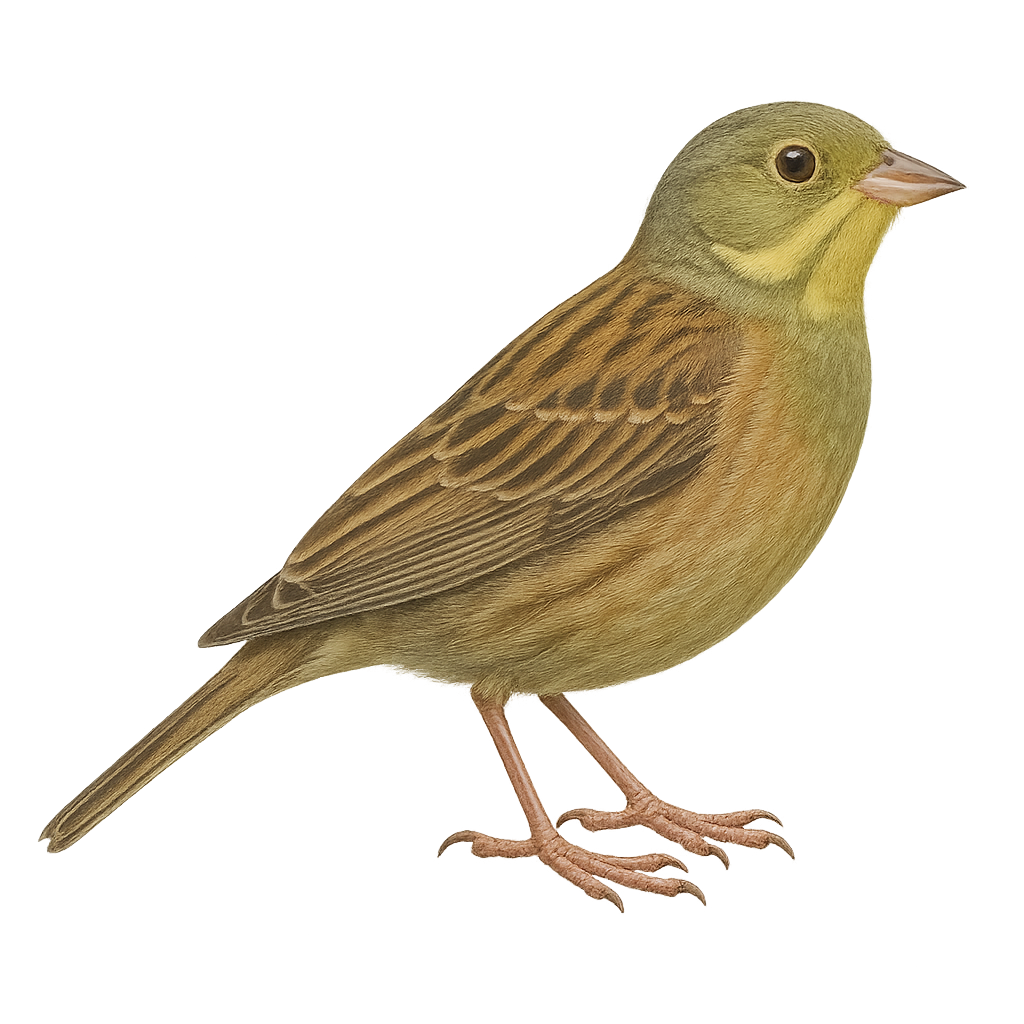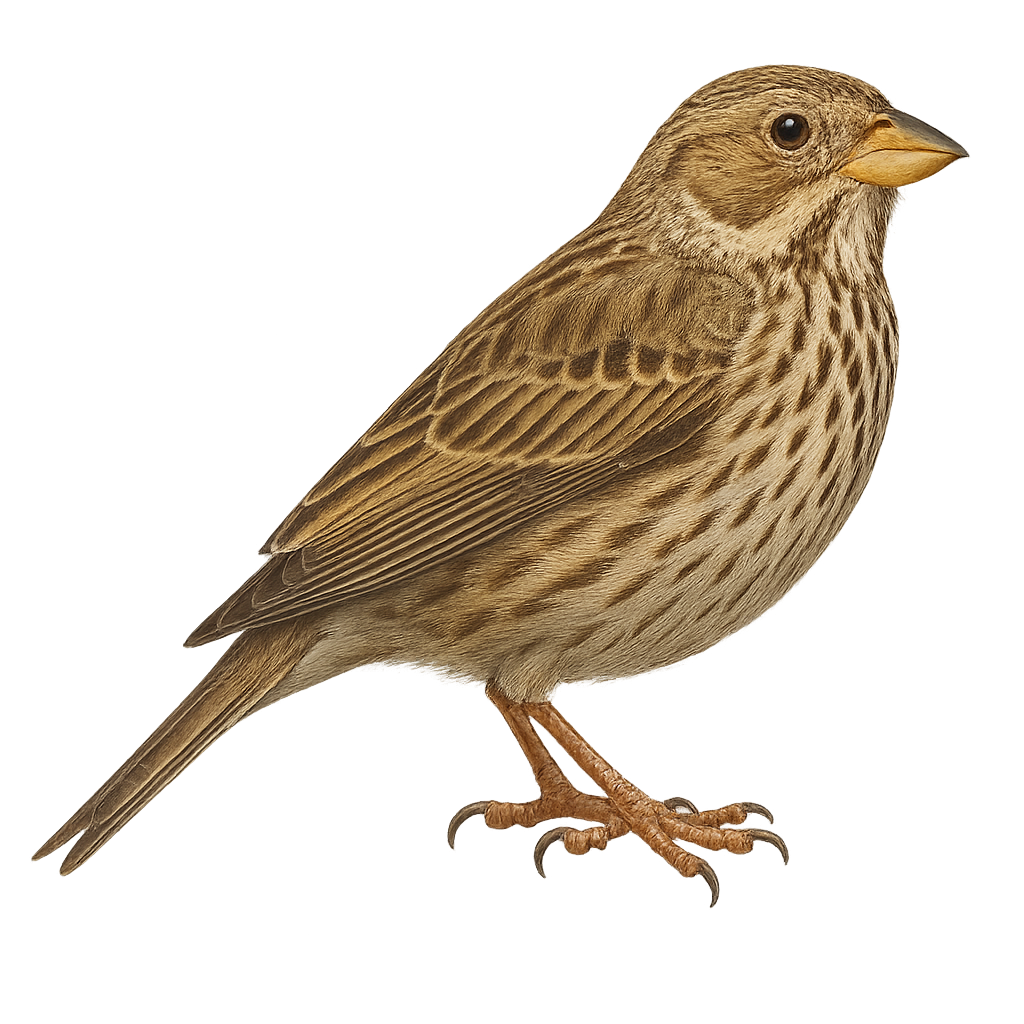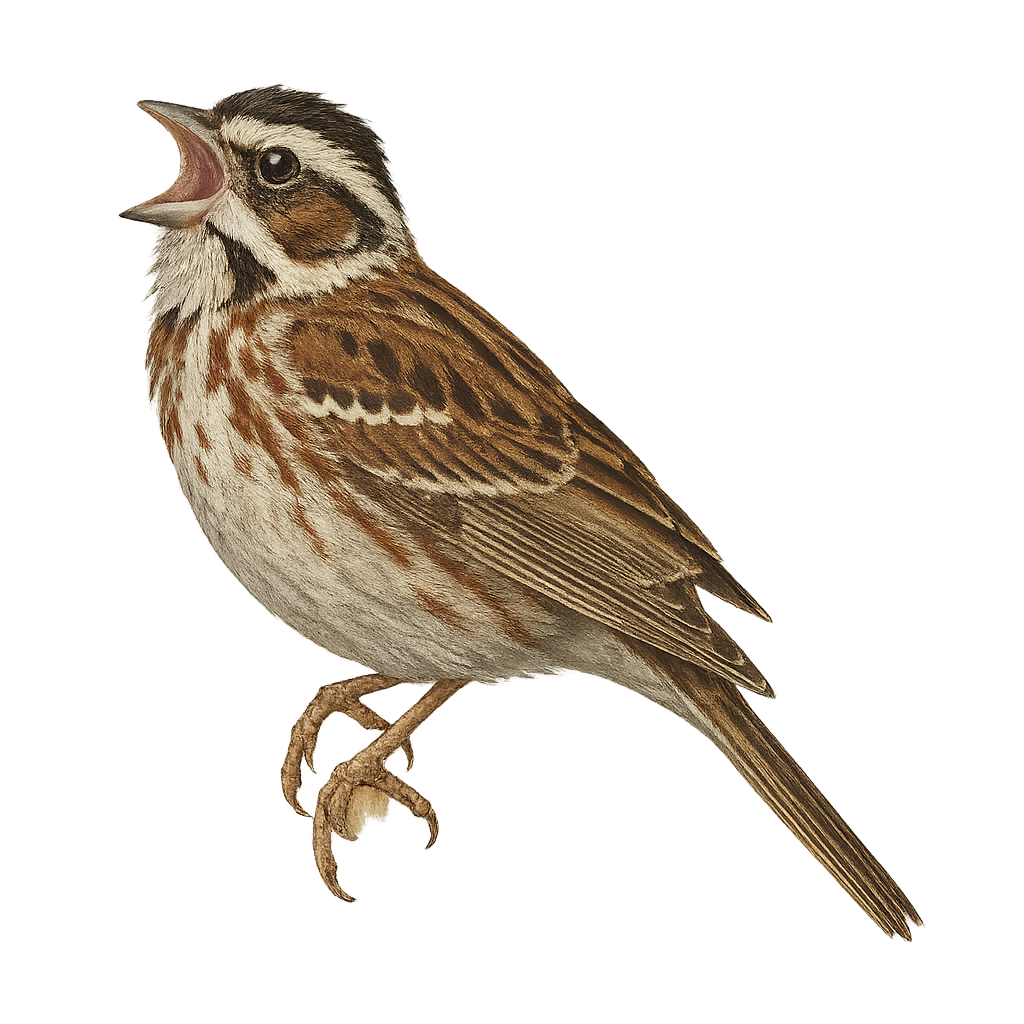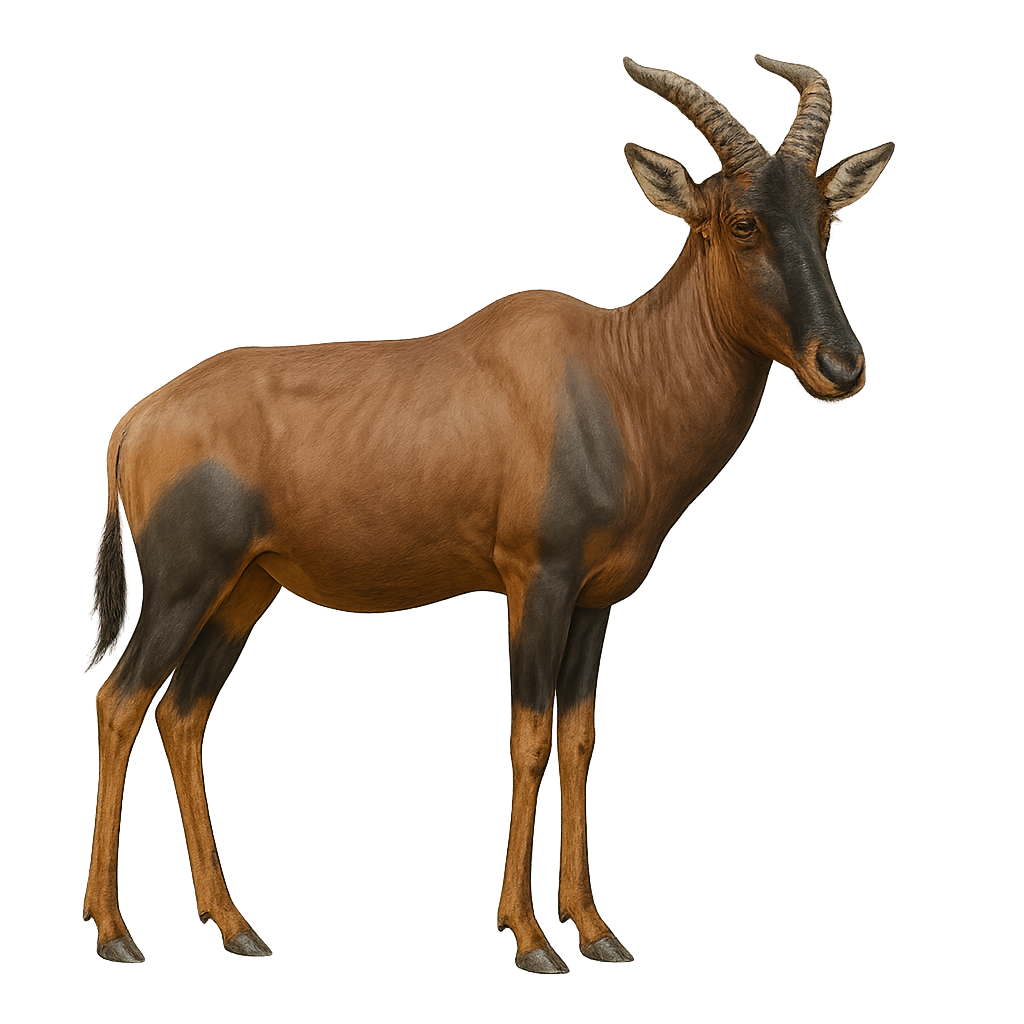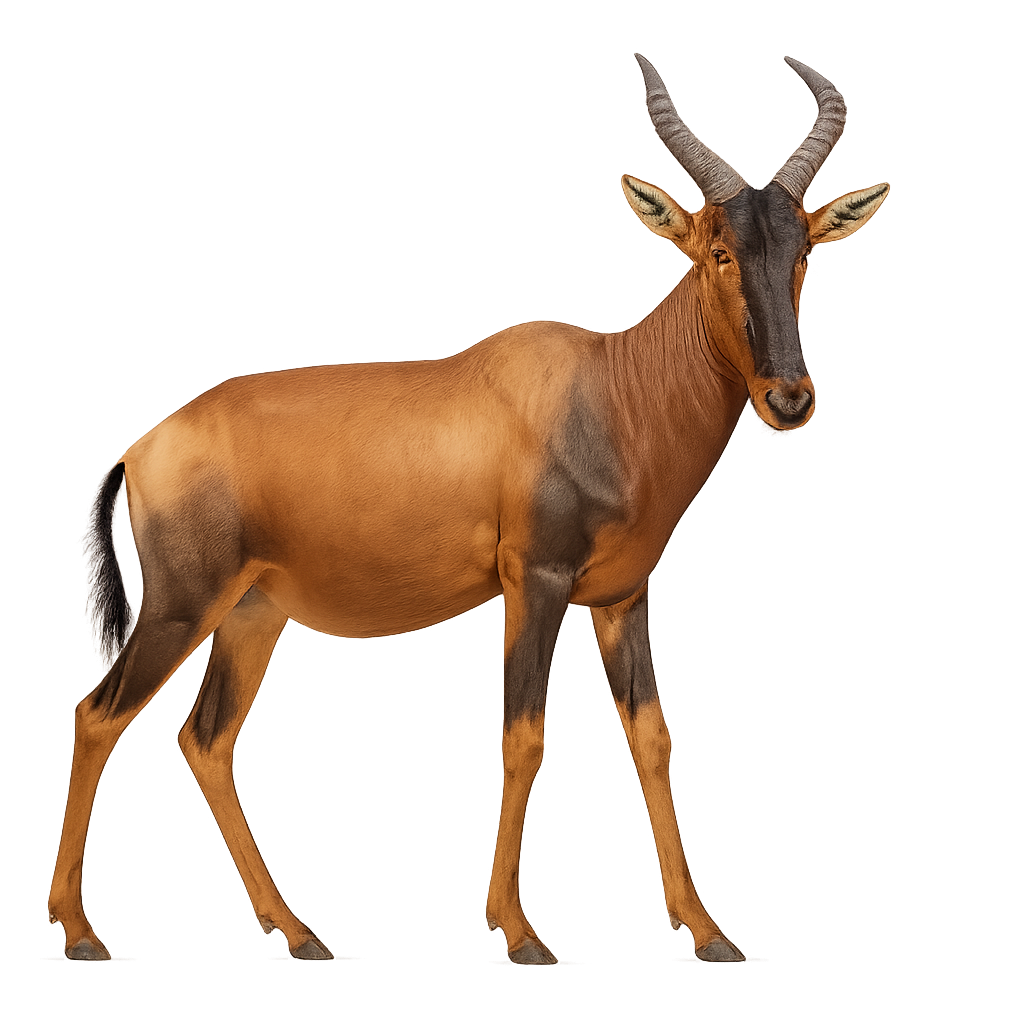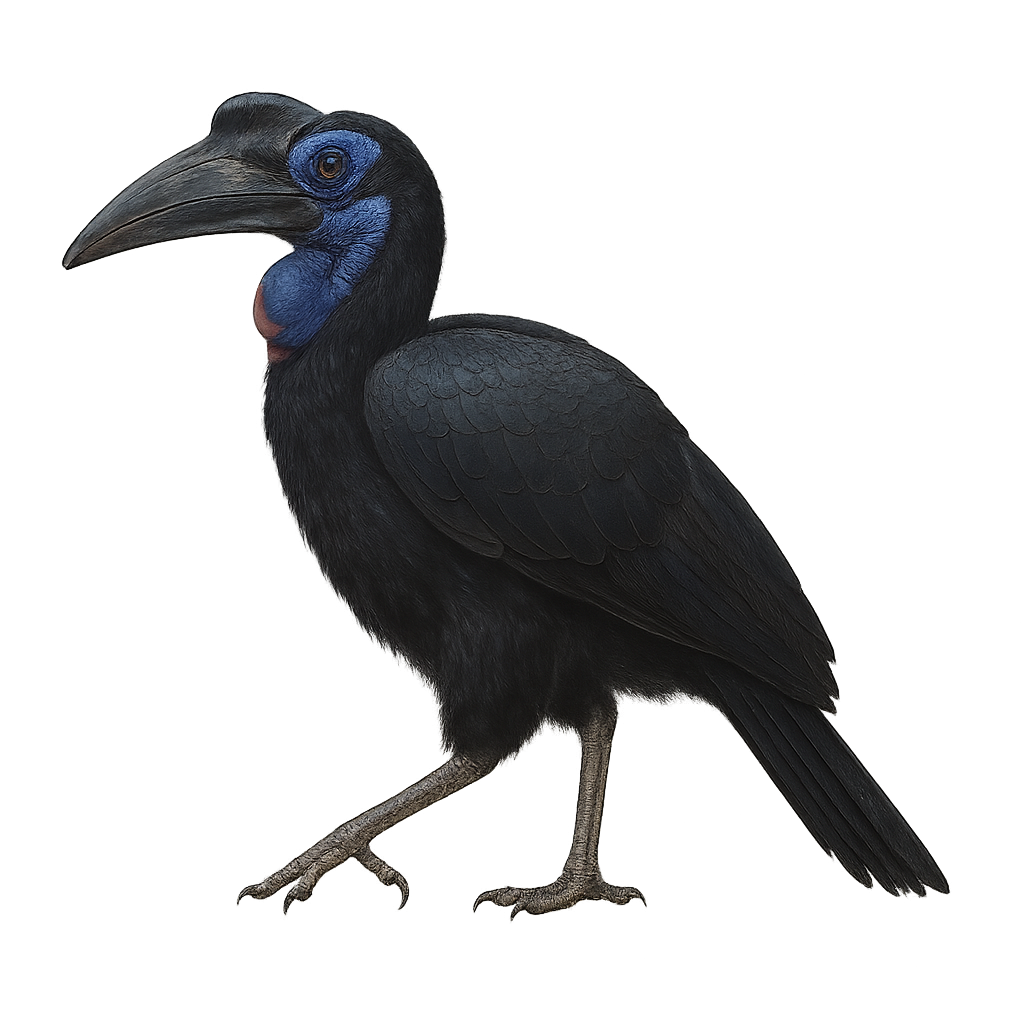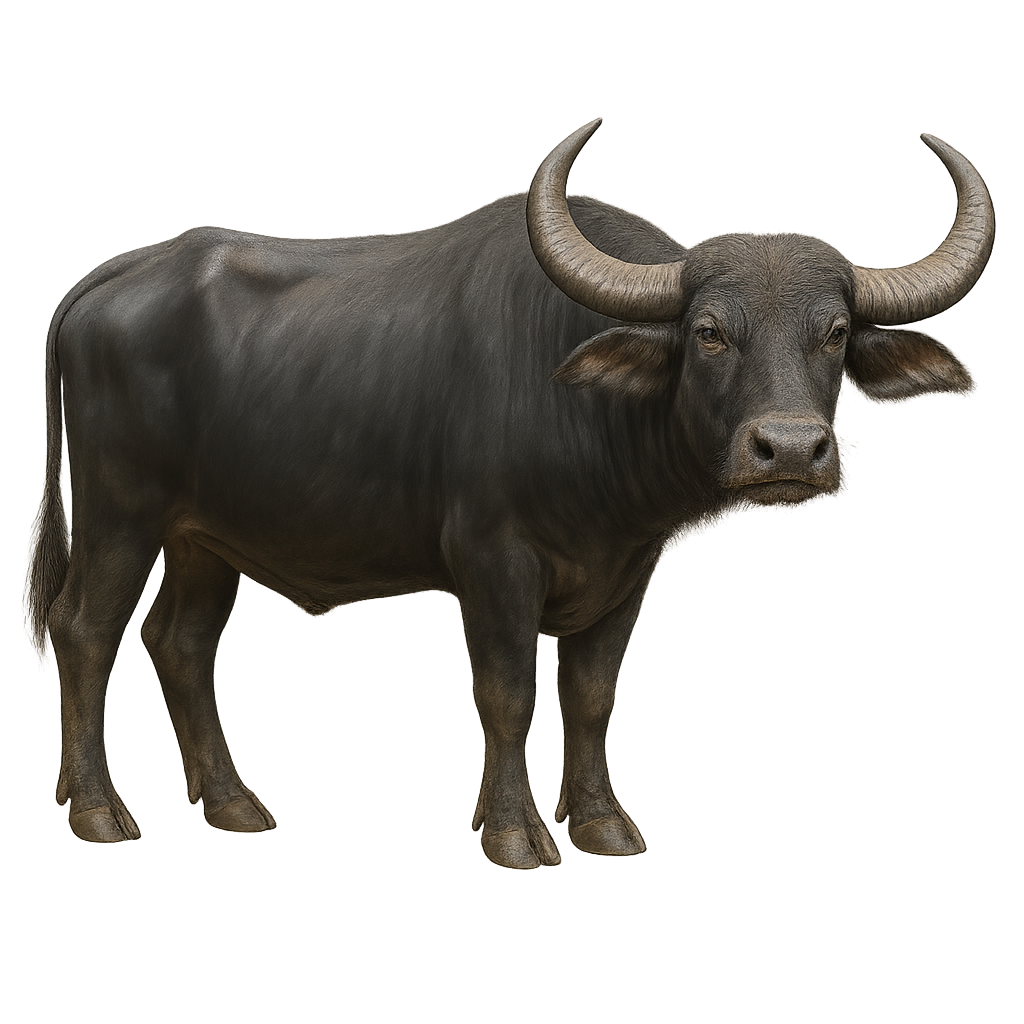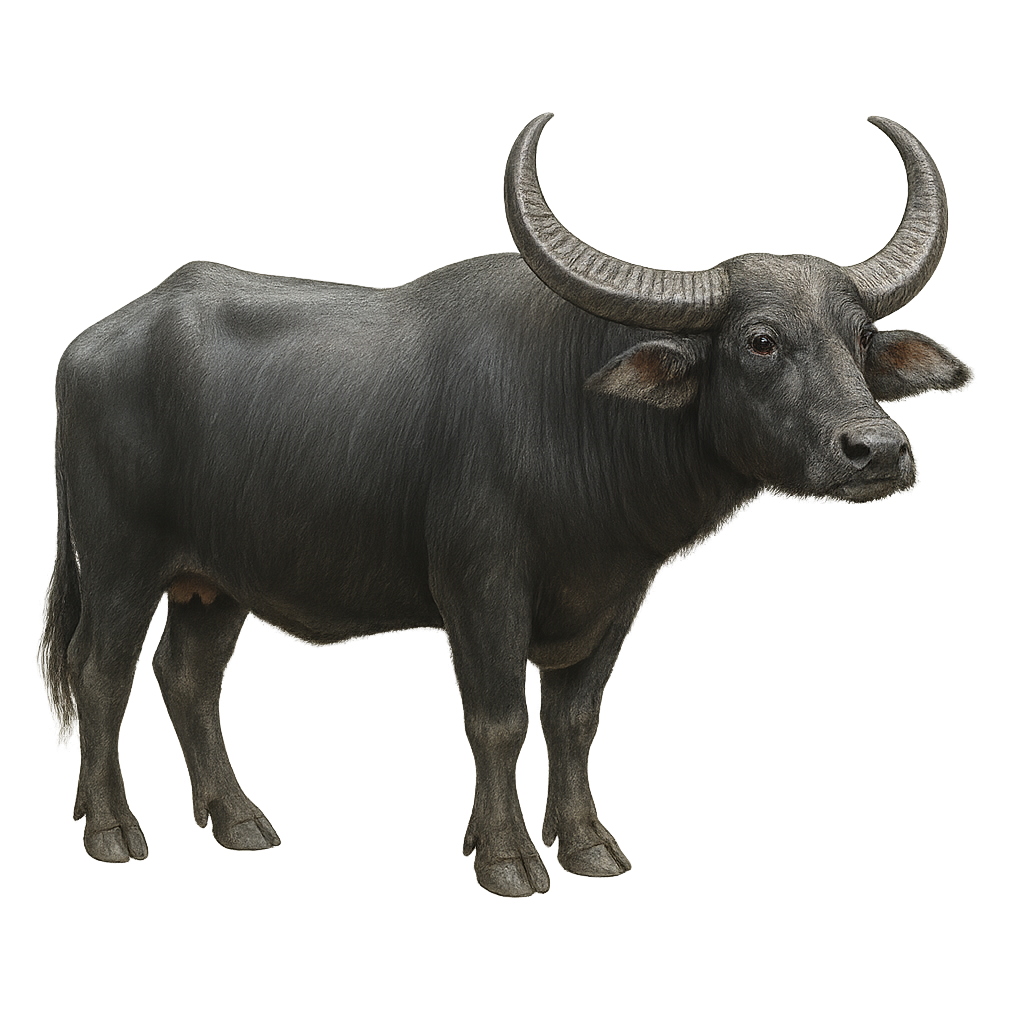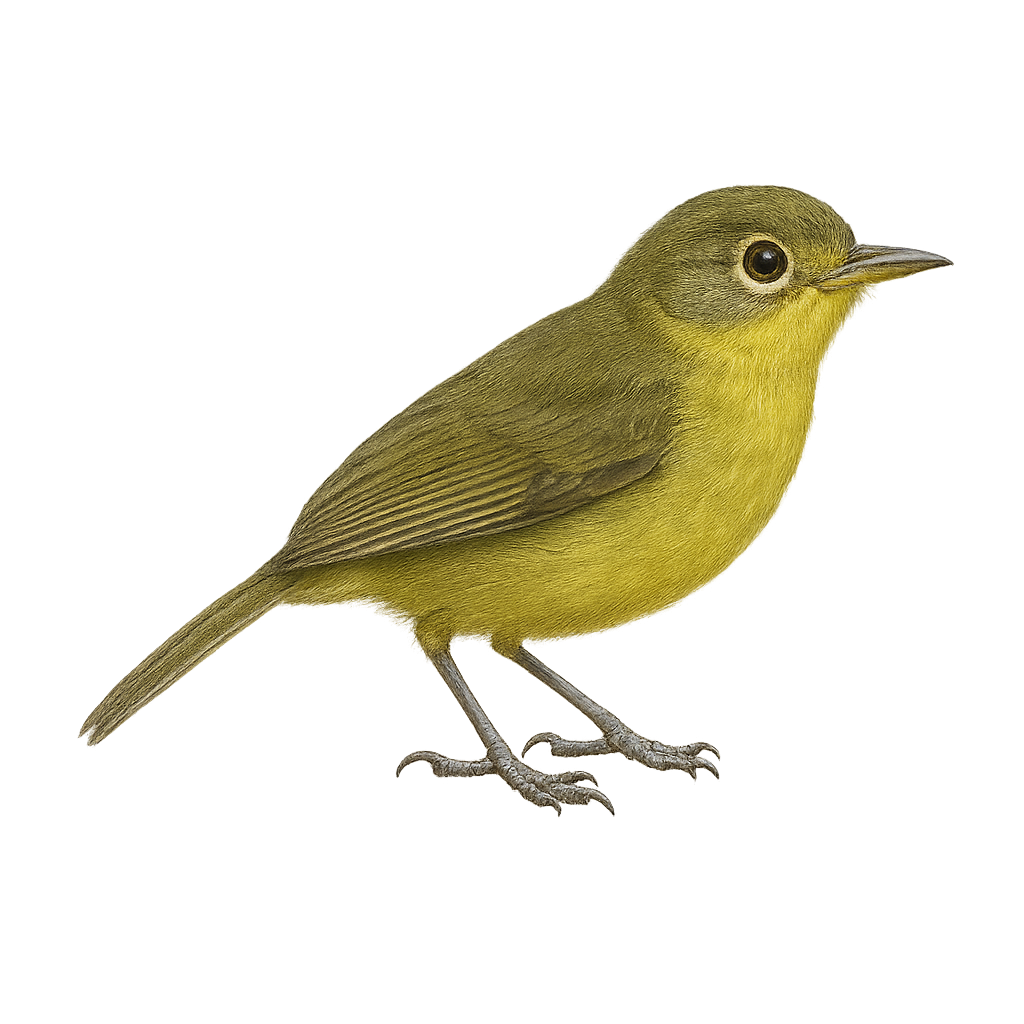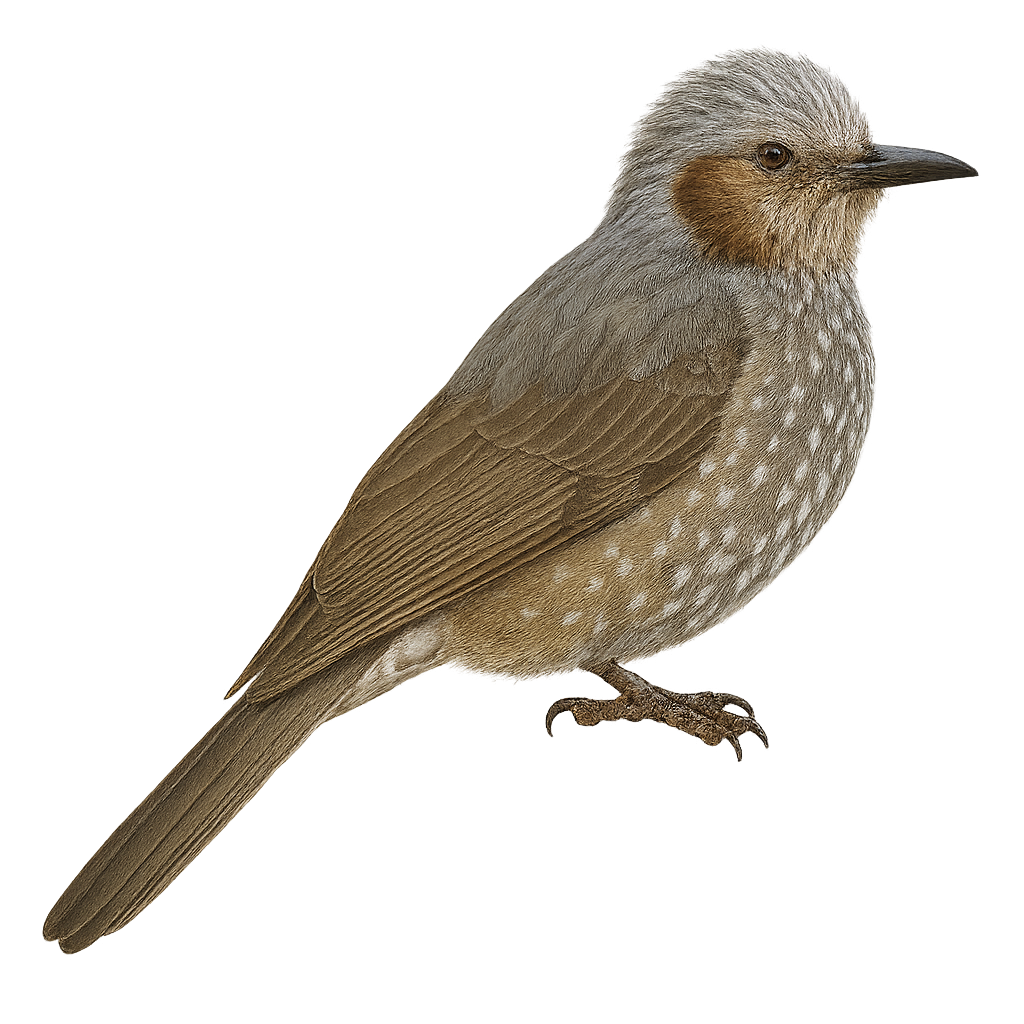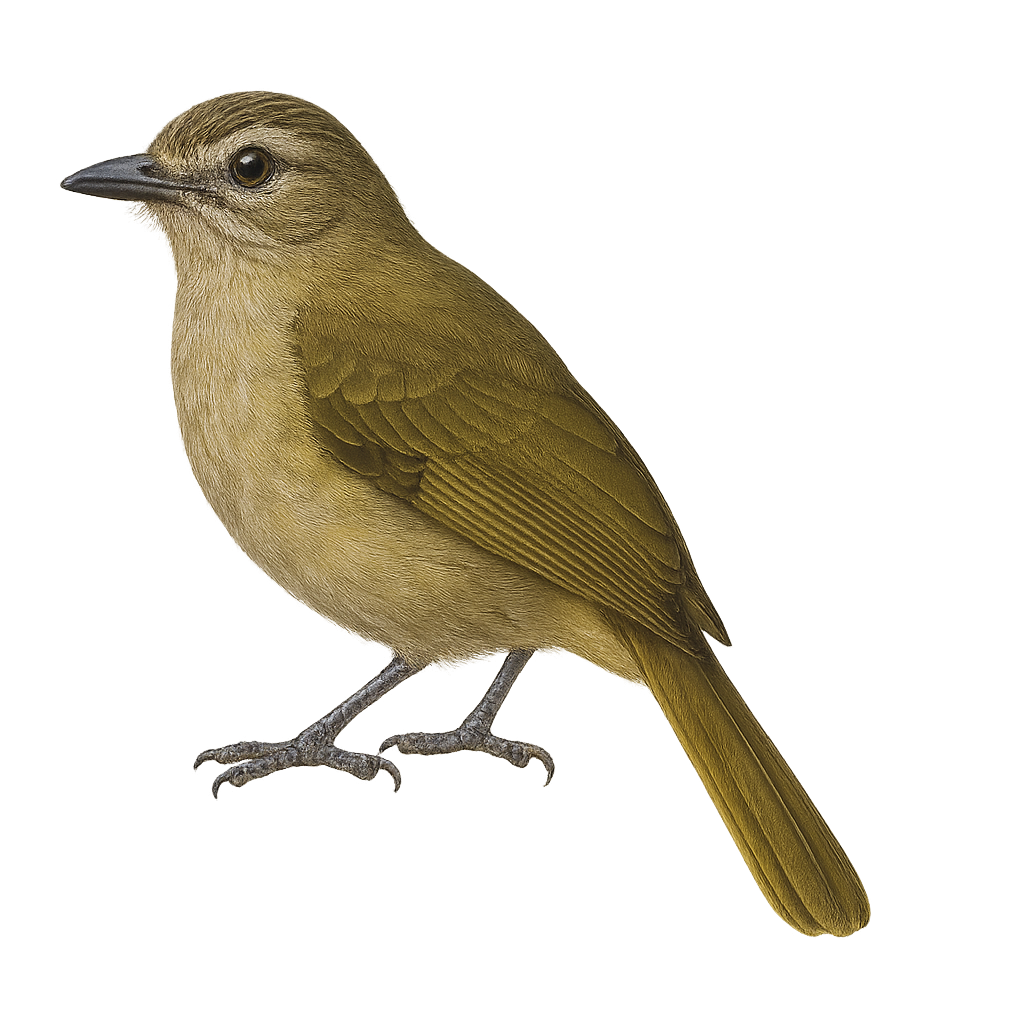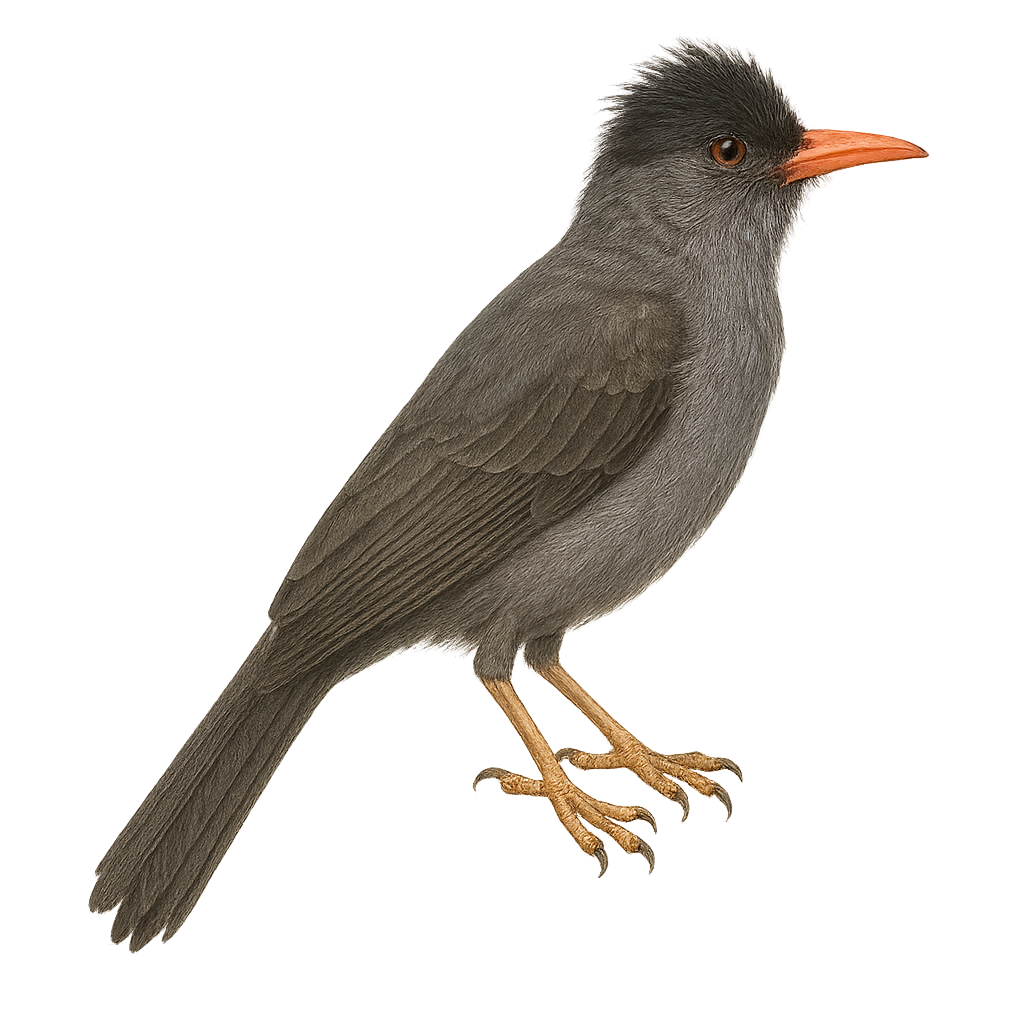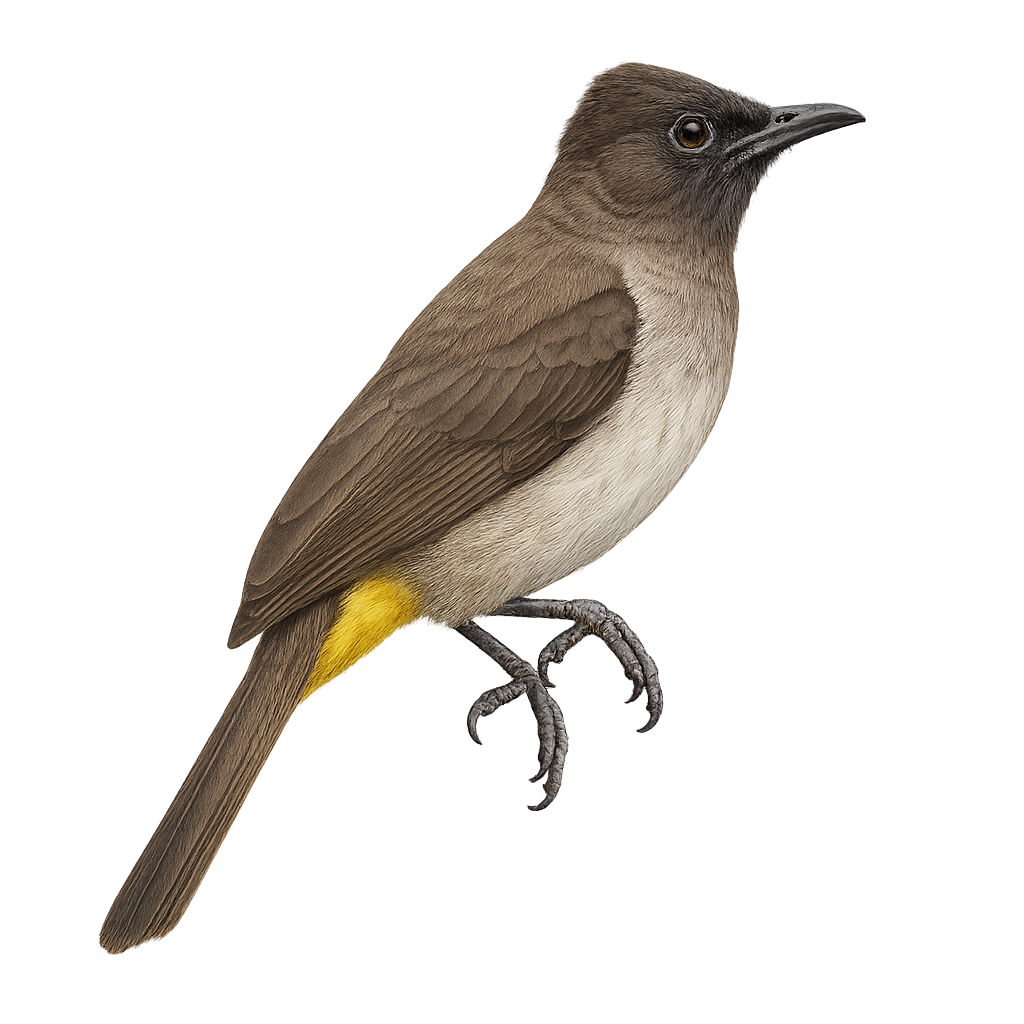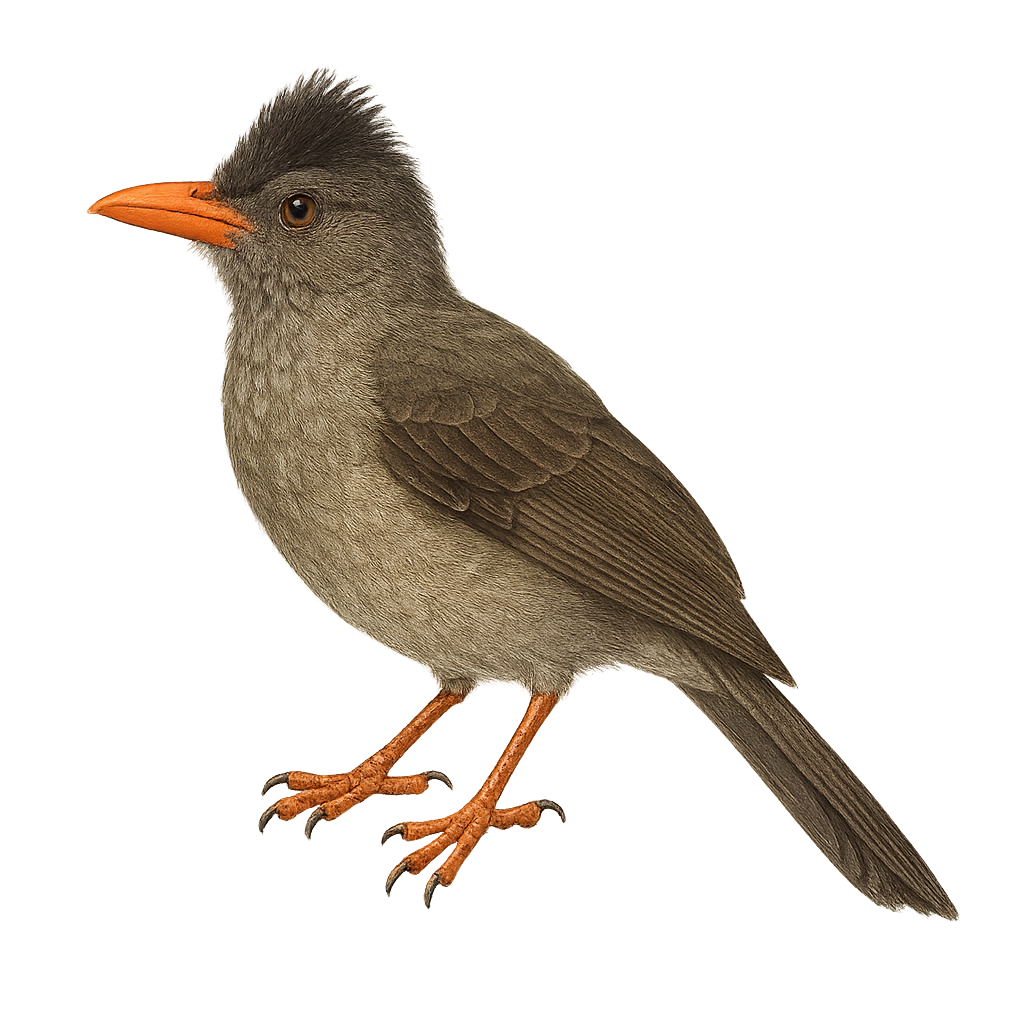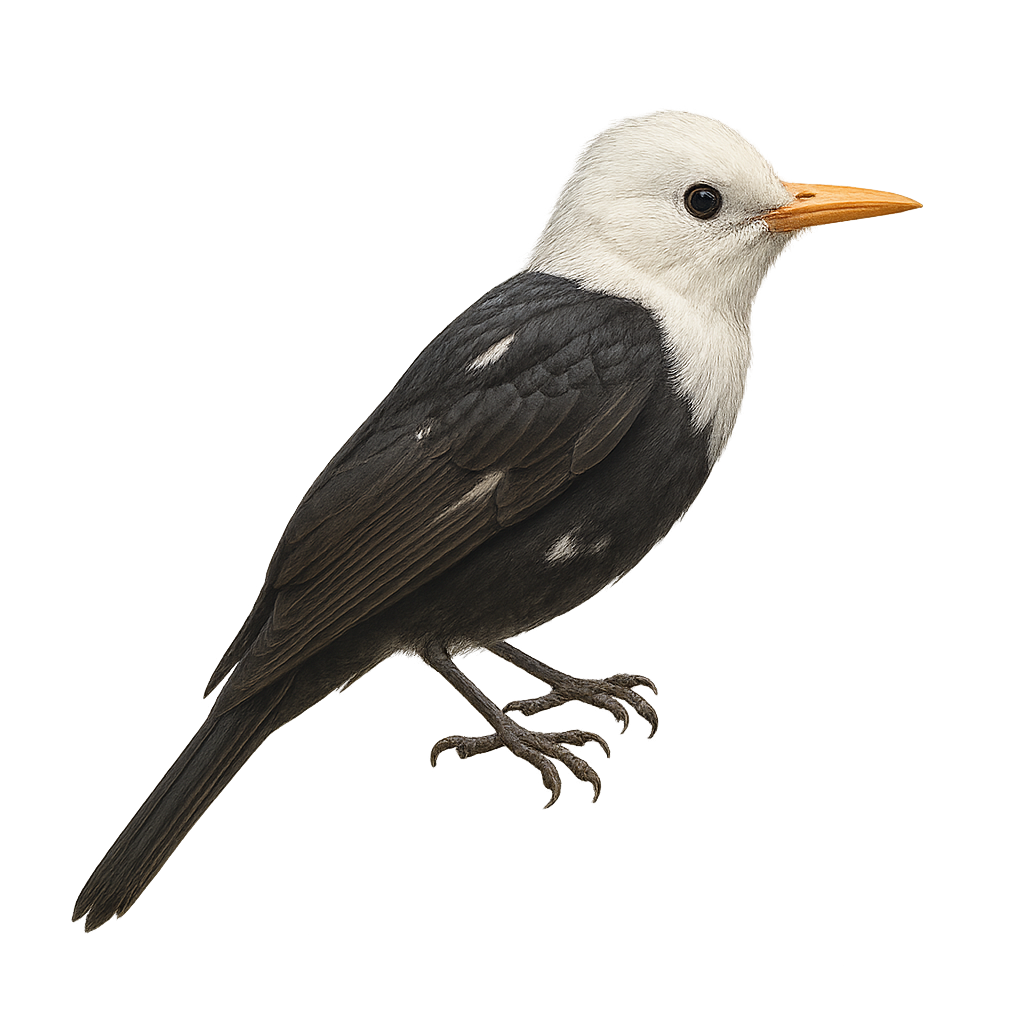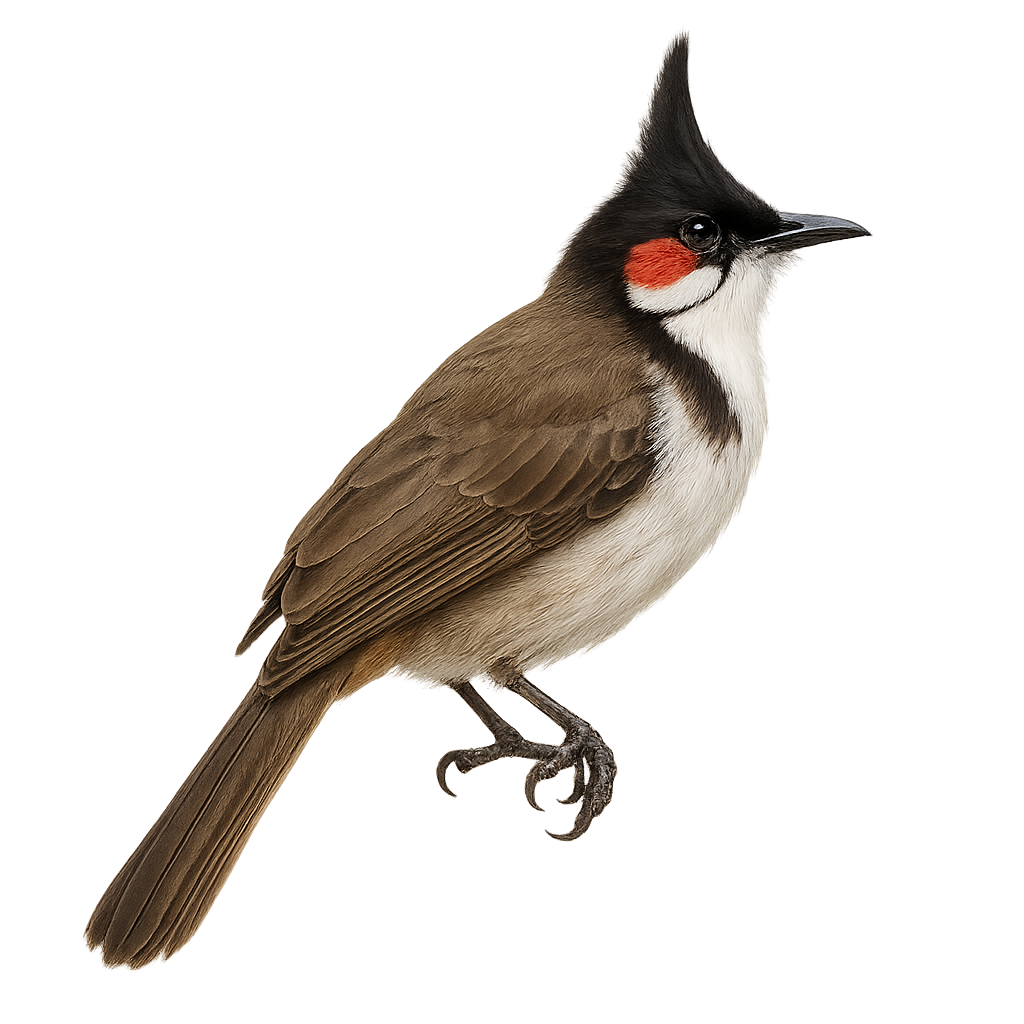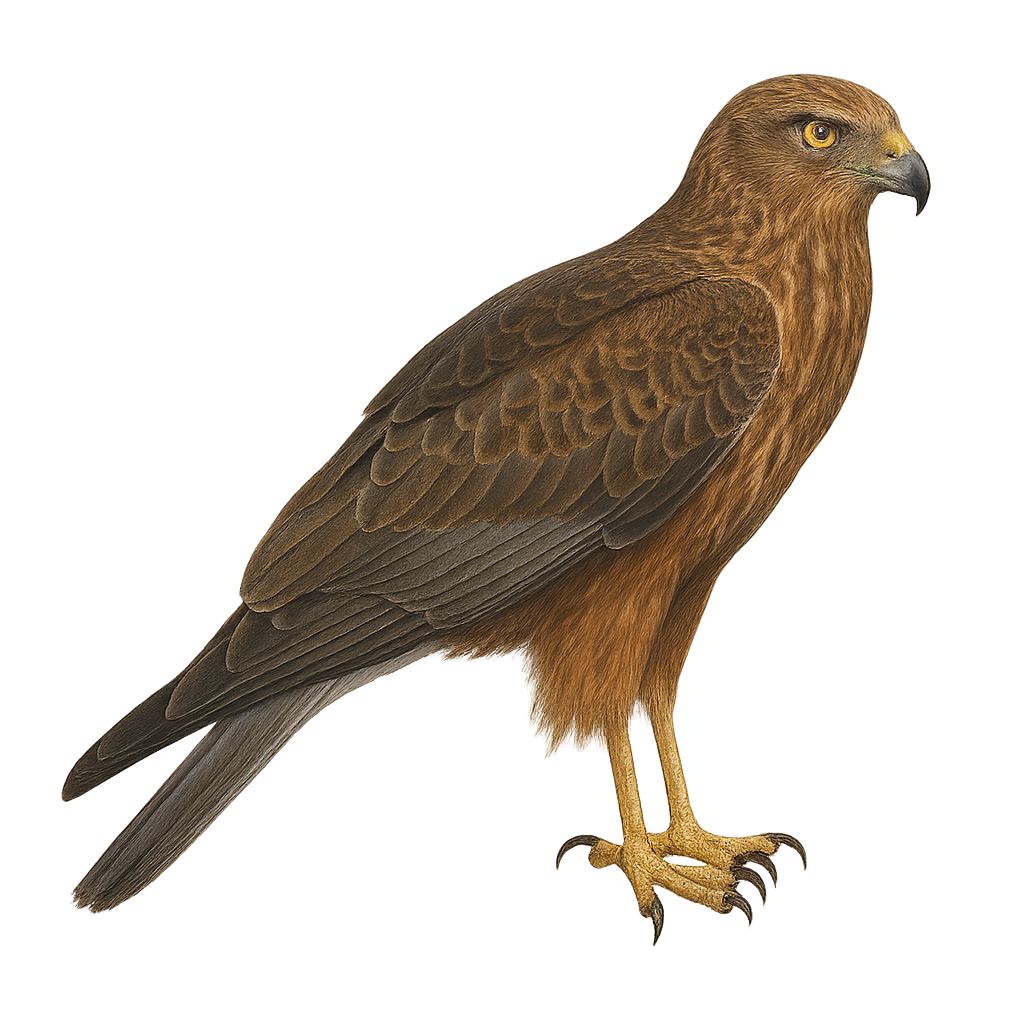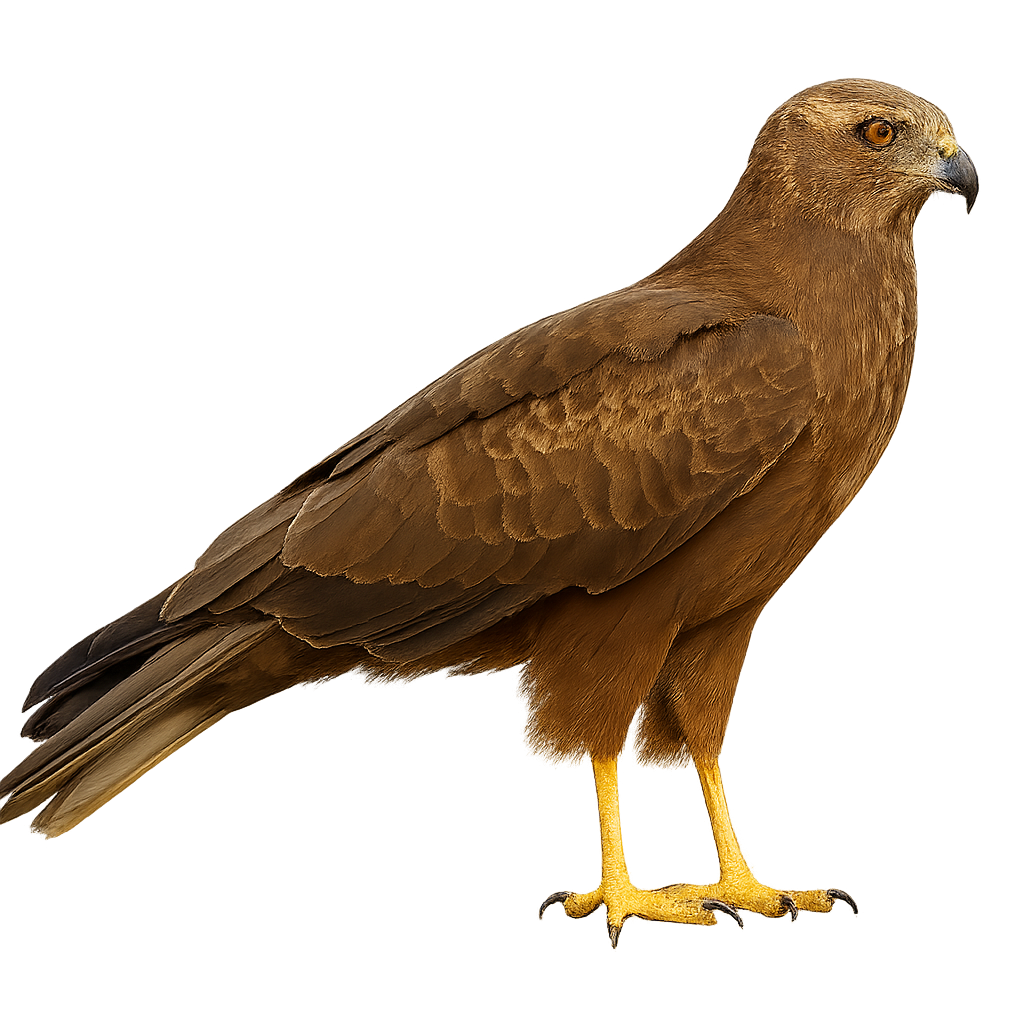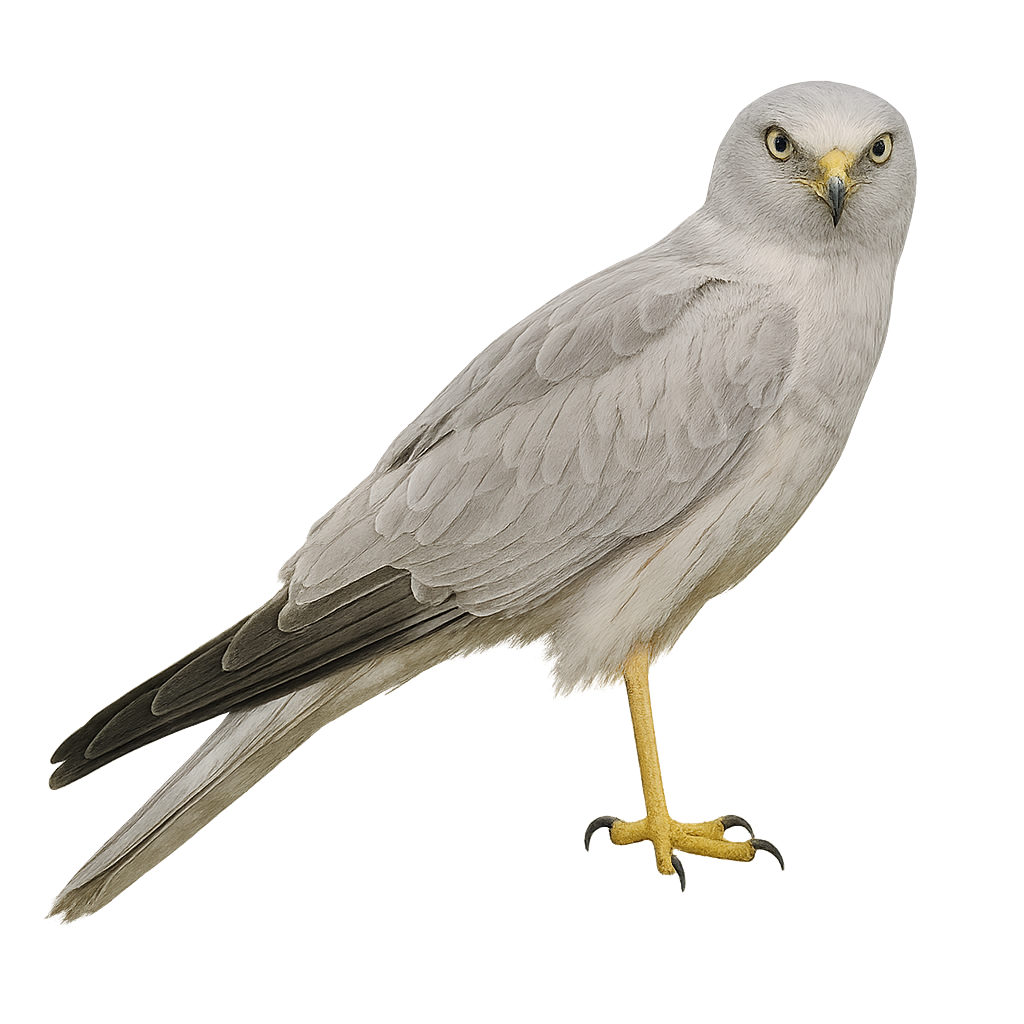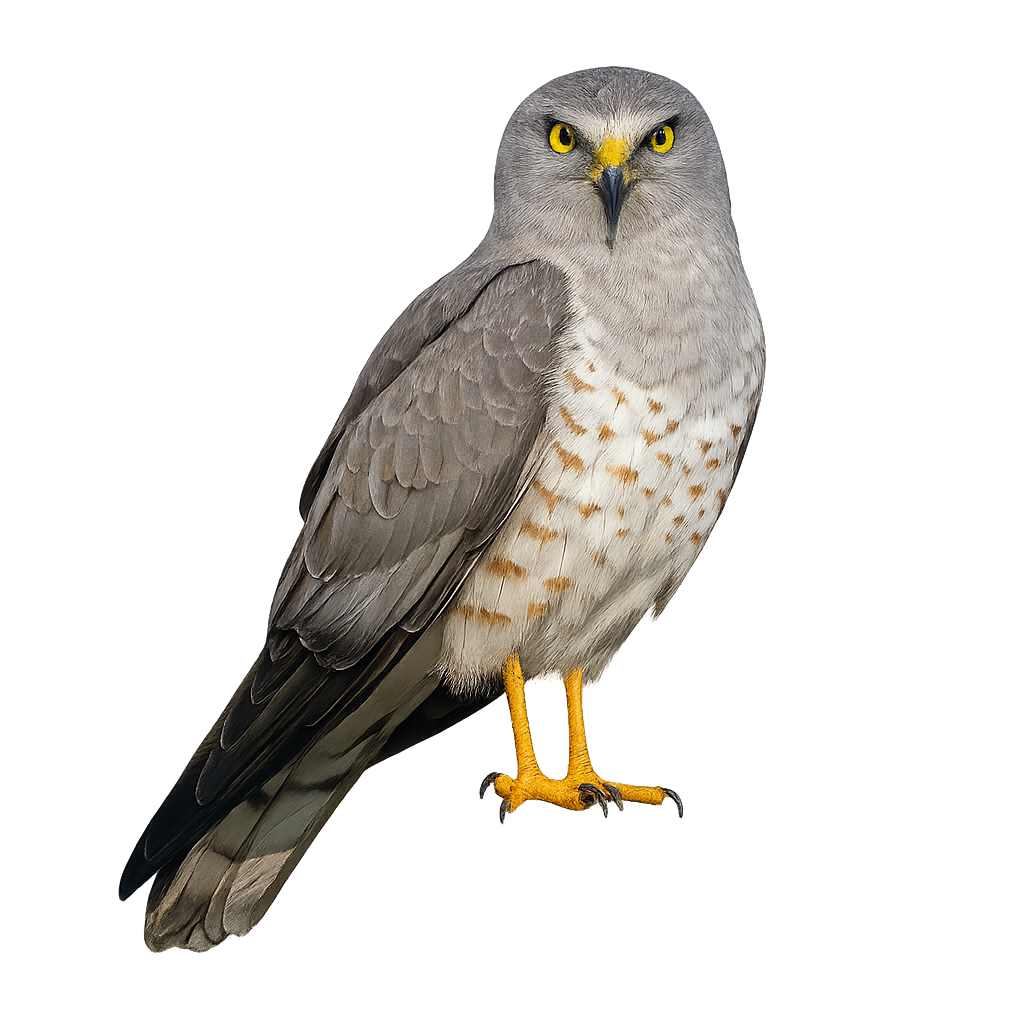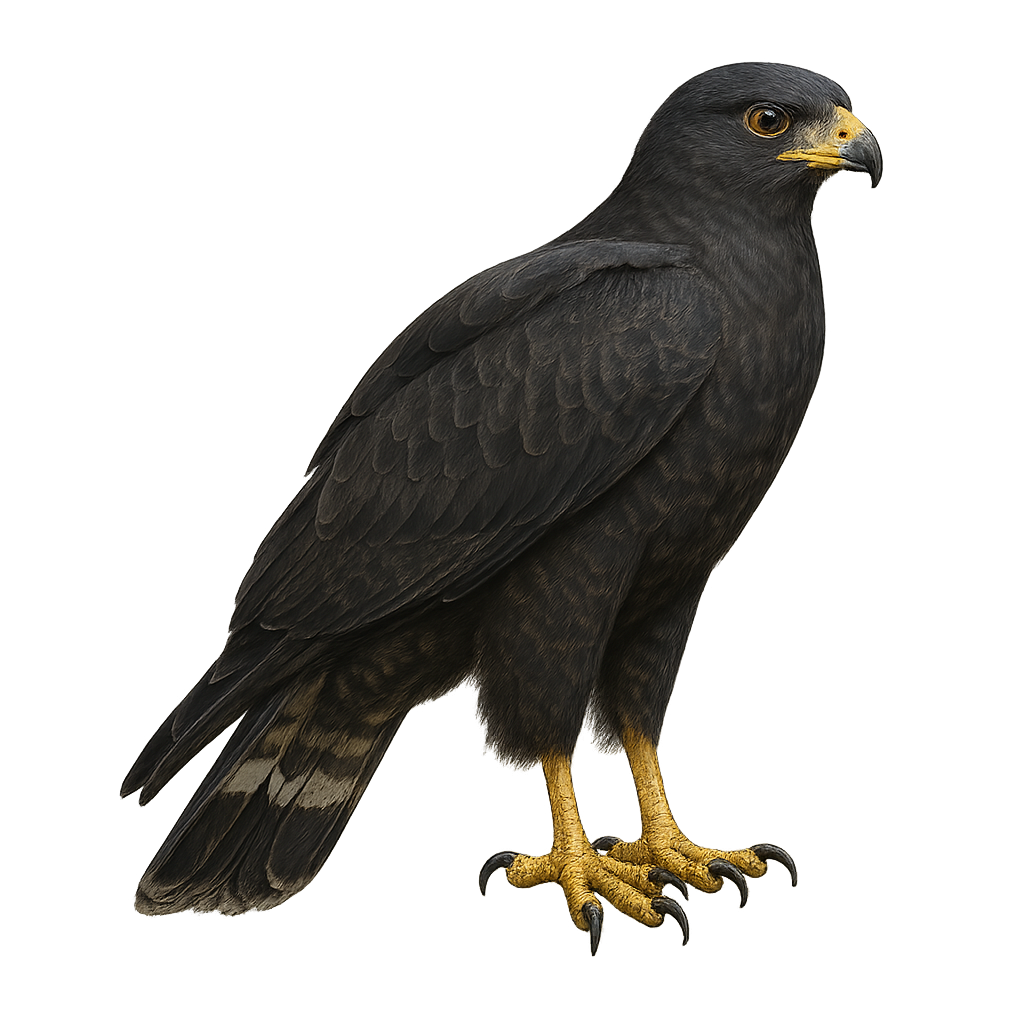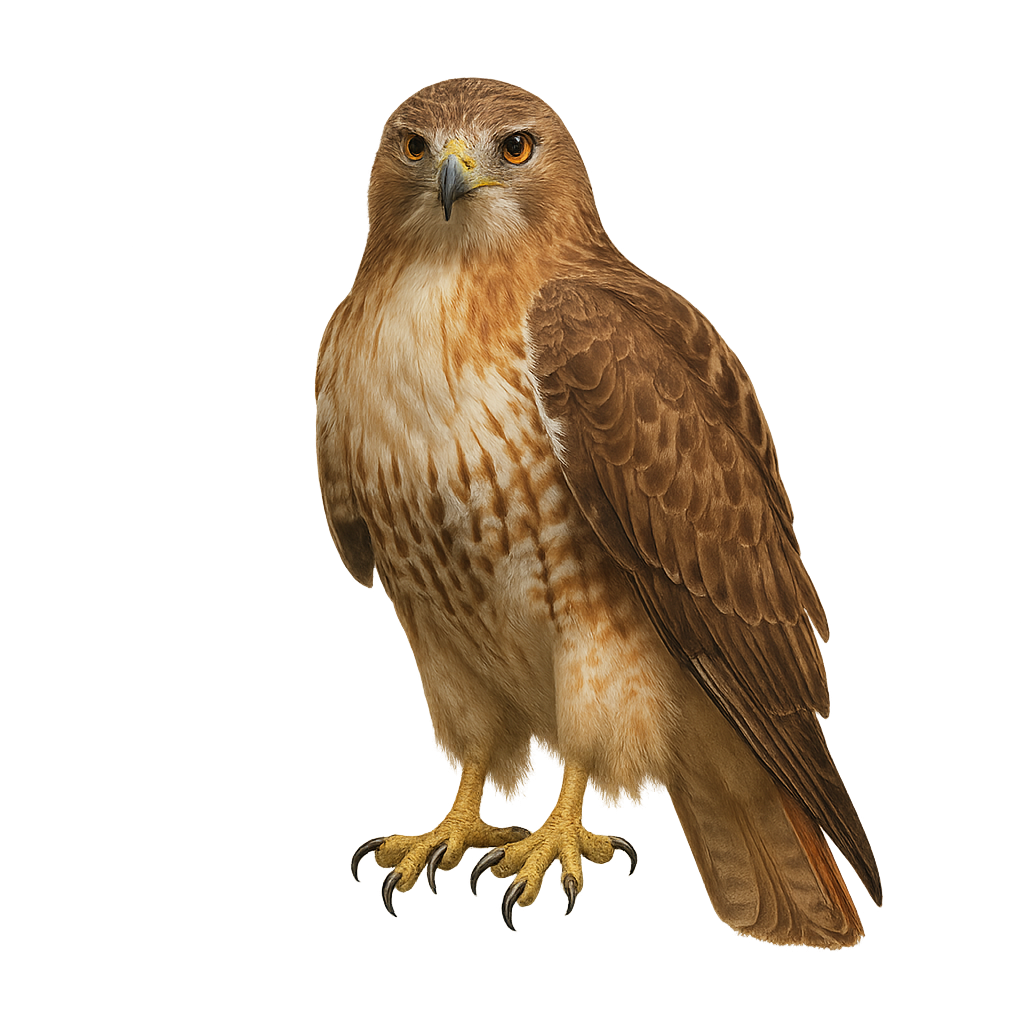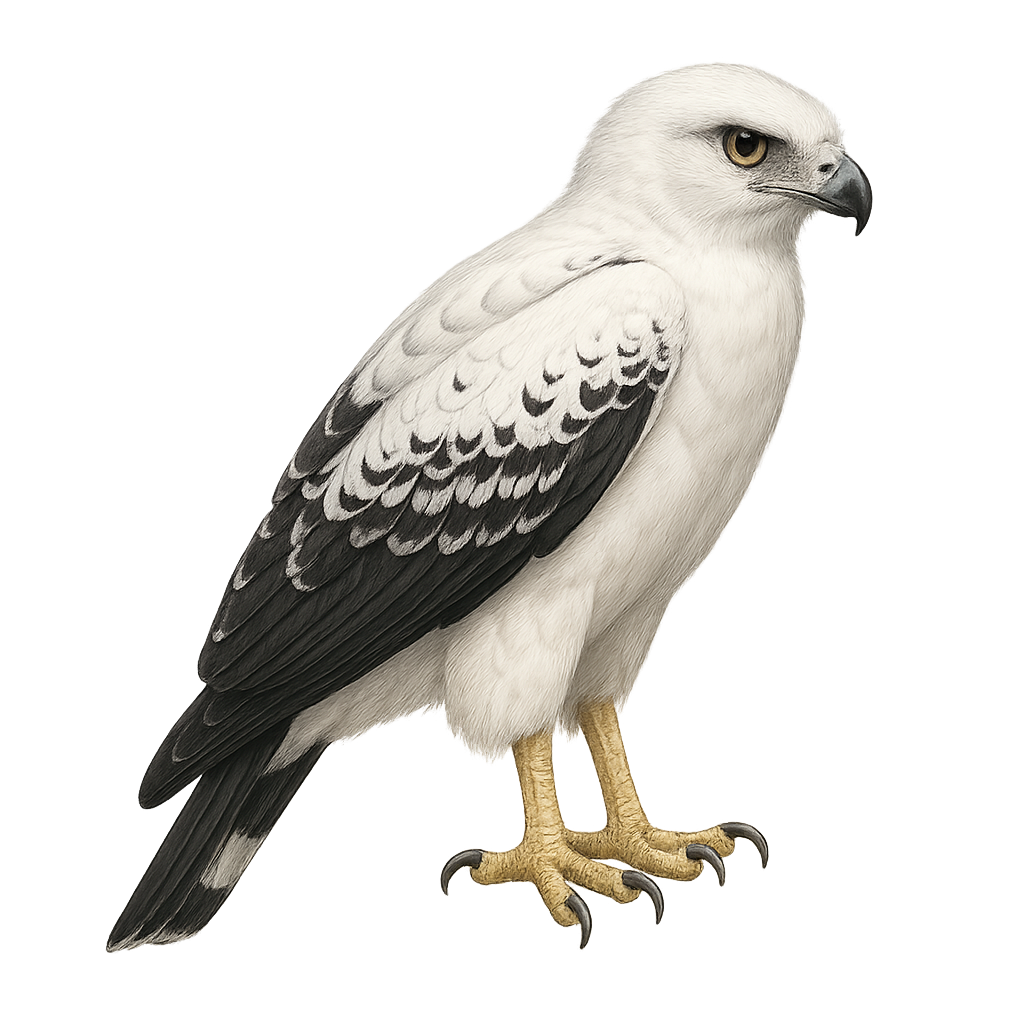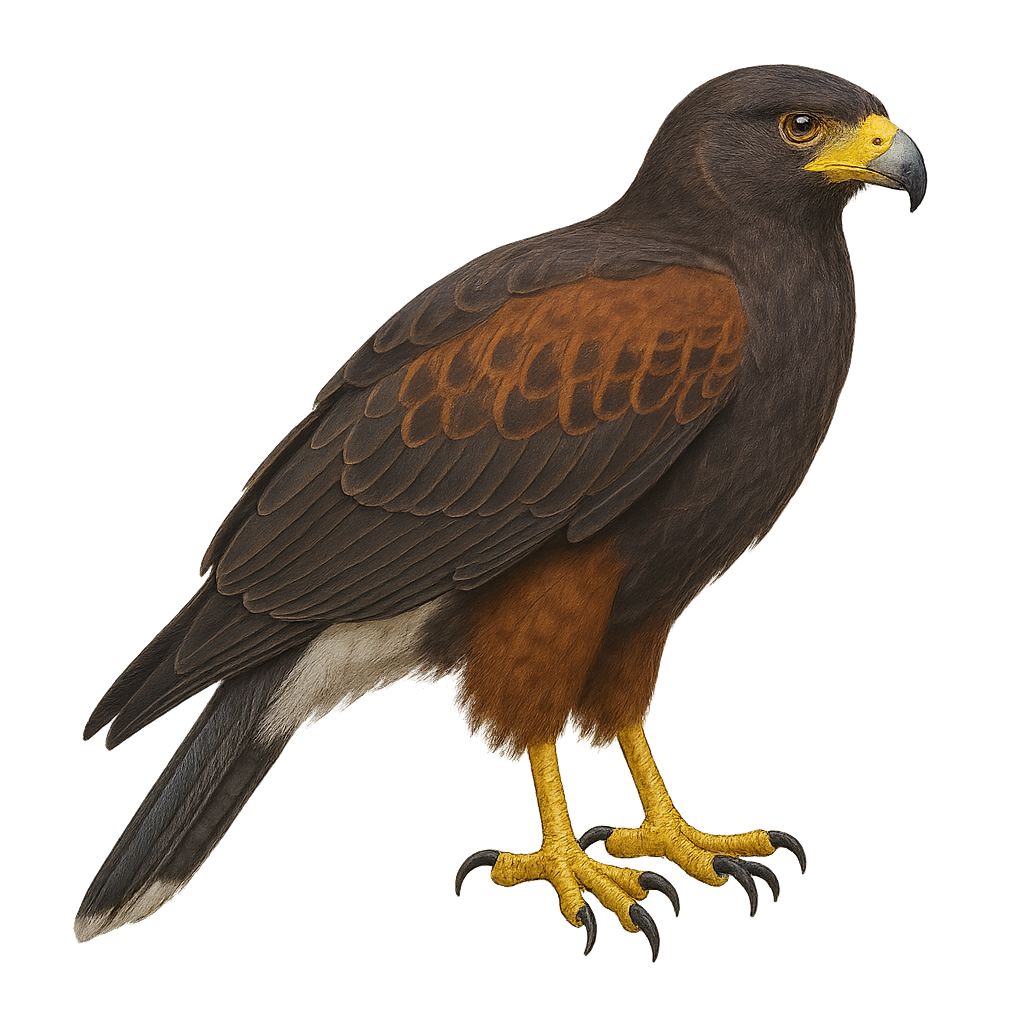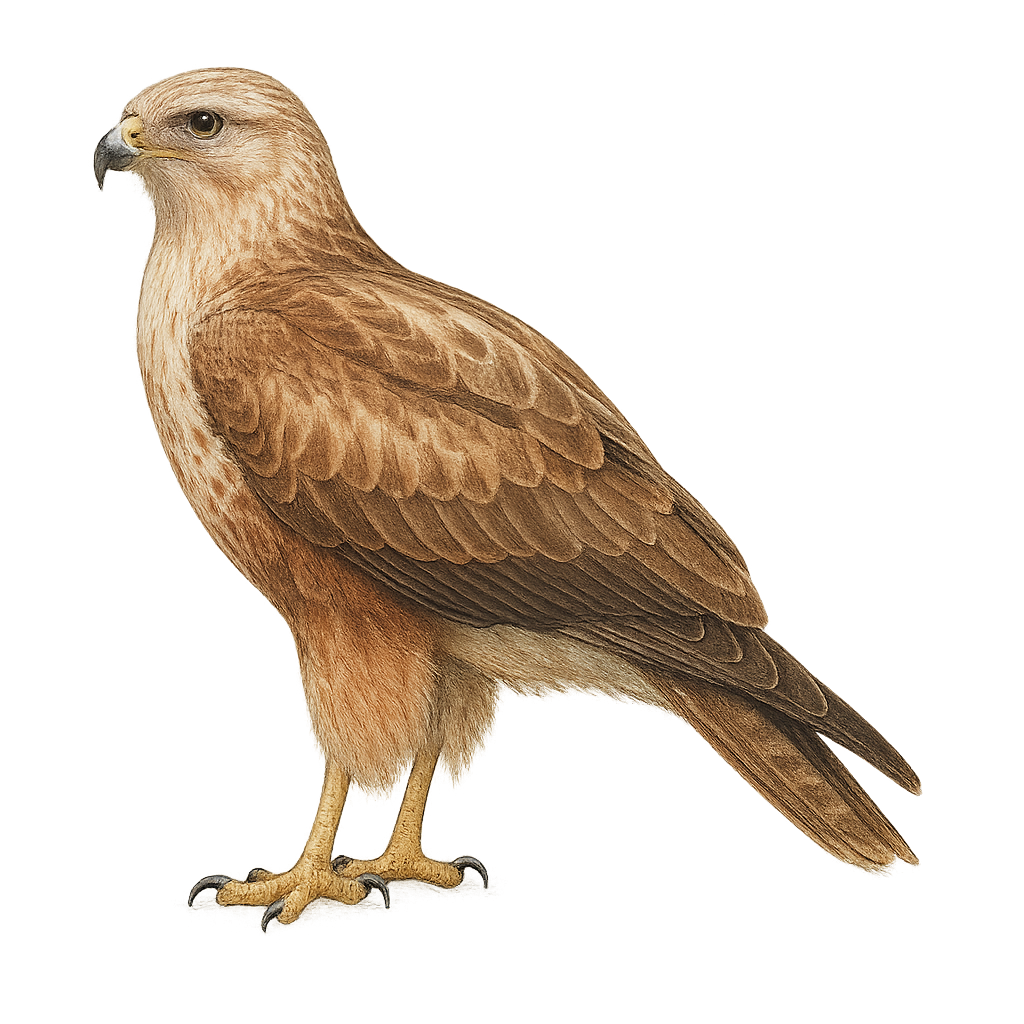The yellowhammer is a small passerine, 15–16 cm long, with bright yellow head and breast in males and duller, brown-streaked plumage in females. It inhabits open fields, hedgerows, and edges, feeding on seeds and insects while foraging on the ground. During breeding (April to July), the male sings from a perch or in flight to mark territory and attract the female.
The yellowhammer is a small passerine bird found primarily in fields, meadows, and hedgerows across Europe and Asia. It is easily recognized by its bright yellow plumage, brown striped head, and pale yellow belly. This bunting is mainly insectivorous, but it also feeds on seeds and berries. It is often heard singing, especially during the breeding season, where it defends its territory with a clear and distinct song.
Small passerine 16–17 cm long with streaked olive-brown plumage and a greenish-grey head. Inhabits cereal fields and margins, feeding mainly on seeds, supplemented by insects during breeding. Pairs nest on the ground, hiding nests among crops or low vegetation, and males sing from low perches to defend territory.
The corn bunting (Emberiza calandra) is a passerine bird in the family Emberizidae. It is a large, bulky bunting, 16–19 cm long, with heavily streaked buff-brown plumage. Found in open farmland, weedy wastelands and meadows across southern and central Europe, North Africa and Asia, it feeds mainly on seeds, supplemented by insects during the breeding season. During breeding it builds its nest on or near the ground, and the male sings from an exposed perch to attract the female and defend its territory.
The Rustic Bunting, Emberiza rustica, is a small passerine bird belonging to the Emberizidae family. It is primarily found in coniferous and mixed woodlands across Eurasia. This bunting is characterized by its brown and white plumage, with distinctive head markings, including a black cap and a white stripe above the eye. During the breeding season, the male displays brighter colors to attract females. A migratory bird, it winters in Southeast Asia. The Rustic Bunting is a discreet bird, often difficult to spot due to its shy behavior and dense habitat. Its population is declining, mainly due to habitat loss and climate change.
The Damaliscus korrigum, commonly known as the Coke's hartebeest, is a large African herbivore belonging to the Bovidae family. It is characterized by its reddish-brown coat and lyre-shaped horns. Adapted to savannas and open grasslands, it is often seen in herds. Males are slightly larger than females and have more robust horns. They play a crucial role in the ecosystem by influencing vegetation structure. Their diet mainly consists of grasses, but they can also consume leaves and shoots. Although their population is stable in some areas, they are threatened by hunting and habitat loss.
The Hartebeest is a medium-sized antelope, easily recognized by its slender body, long legs, and slightly curved horns. It primarily inhabits the savannas and open plains of North and West Africa, where it forms large herds. The Hartebeest feeds mainly on grasses and low vegetation, and it is particularly well adapted to life in arid and semi-arid environments.
This species is mainly active at dawn and dusk, avoiding the intense heat of the day. The Hartebeest is threatened by habitat loss due to agriculture and hunting, and although conservation efforts have been made, its population remains vulnerable. It is listed as "Near Threatened" on the IUCN Red List.
The Abyssinian Ground Hornbill, or Bucorvus abyssinicus, is a large terrestrial bird known for its striking black plumage and vivid red markings around its eyes and neck. It is primarily found in sub-Saharan Africa, inhabiting savannas and open grasslands. This bird is notable for its social behavior, often living in small family groups. It feeds mainly on insects, small reptiles, and mammals. Its call is deep and resonant, often heard at dawn. The Abyssinian Ground Hornbill plays an important ecological role in controlling insect and small animal populations. Its longevity and low reproductive rate make it vulnerable to environmental disturbances.
The Southern Ground Hornbill is an impressive bird, recognizable by its glossy black plumage and vivid red facial skin. It is one of the largest hornbills, measuring up to 1.2 meters in length. This bird is primarily terrestrial, moving in small family groups across the savannas and grasslands of southern Africa. It feeds mainly on insects, small reptiles, and mammals. The Southern Ground Hornbill is known for its longevity, living up to 70 years in captivity. However, it is threatened by habitat loss and the reduction of natural nesting sites.
The African Buffalo is one of the largest and most powerful herbivorous mammals on the African continent, easily recognizable by its massive body, impressive horns, and dark coat. It primarily inhabits the savannas, grasslands, and open forests of sub-Saharan Africa. This social animal moves in large herds, sometimes composed of hundreds of individuals, which offer protection from predators through the collective strength of the group.
The African Buffalo is a strict herbivore, feeding mainly on grasses and woody vegetation. Although it has a rather calm temperament, it can become extremely aggressive when threatened, and its physical strength makes it a formidable opponent for predators. Despite being a secondary predator, it is vulnerable due to hunting and habitat loss, although conservation efforts have helped stabilize some populations.
The Bubalus arnee, or wild water buffalo, is a large herbivorous mammal native to the wetlands and marshes of South and Southeast Asia. It is characterized by its massive build, curved horns, and thick skin often coated with mud to protect against insects and the sun. Wild water buffaloes live in herds and are known for their social behavior. They play a crucial role in their ecosystem by maintaining the balance of wetland areas. Unfortunately, their population is declining due to habitat loss, hunting, and hybridization with domestic buffaloes.
The water buffalo, or Bubalus bubalis, is a large domesticated mammal native to South and Southeast Asia. Known for its robustness and ability to thrive in wet environments like marshes and rice paddies, it has thick skin and distinctive curved horns. Primarily used for agricultural work and milk production, the water buffalo is vital to the rural economy in many regions. It is also valued for its meat. Although domesticated, it retains a suspicious behavior towards humans. Water buffaloes are social animals that live in herds and often move together for protection against predators.
The Xanthomixis zosterops, known as the Spectacled Tetraka, is a small bird endemic to Madagascar. It is characterized by its olive-green plumage and white-ringed eyes, which give it its name. This bird primarily inhabits the island's humid forests, where it feeds on insects and small invertebrates. It is often seen in small groups, actively moving in search of food. Although its habitat is threatened by deforestation, the Spectacled Tetraka remains relatively common in some protected areas. Its song is a soft, melodious trill, often heard at dawn.
The Brown-eared Bulbul, or Hypsipetes amaurotis, is a medium-sized bird known for its brownish ear patches and grayish plumage. It is primarily found in the forests and wooded areas of Japan, Korea, and parts of China. This bird is known for its melodious and varied song, often heard at dawn. Although relatively common in its natural habitat, it can be difficult to spot due to its wary behavior. The Brown-eared Bulbul primarily feeds on fruits, nectar, and insects, playing an important role in pollination and seed dispersal.
The White-browed Bulbul, or Pycnonotus luteolus, is a medium-sized bird known for its bright yellow head and distinctive white eyebrows. It primarily inhabits the dry and semi-arid regions of India and Sri Lanka. Its plumage is mainly olive-brown, allowing it to blend into its natural surroundings. This bird is often seen in small groups, feeding on fruits, insects, and nectar. It is known for its melodious and varied song, often heard at dawn. The White-browed Bulbul is a resilient bird, capable of adapting to various habitats, including urban gardens and sparse forests.
The Madagascar Bulbul, or Hypsipetes madagascariensis, is an endemic bird of Madagascar and surrounding islands. It is characterized by its greyish plumage, black head, and bright orange beak. This bird measures about 24 cm in length and is known for its melodious song. It inhabits various environments, including humid forests, wooded areas, and gardens. An omnivore, it primarily feeds on fruits, insects, and nectar. The Madagascar Bulbul is a sociable bird, often seen in small groups. Although relatively common, it is crucial to preserve its natural habitat to ensure its long-term survival.
The Pycnonotus barbatus, or Common Bulbul, is a medium-sized bird, measuring about 20 cm in length. It is easily recognizable by its black head, white belly, and bright yellow throat. This bird is highly adaptable and can be found in various habitats, from forests to urban gardens. It is known for its melodious and varied song, often heard at dawn. The Common Bulbul is a sociable bird, often seen in small groups. It primarily feeds on fruits, insects, and nectar. Its ability to adapt to different environments makes it a common species in many parts of sub-Saharan Africa.
The Mauritius Bulbul, or Hypsipetes crassirostris, is an endemic bird of Mauritius, known for its grayish plumage and sturdy beak. It primarily inhabits the island's tropical and subtropical forests, feeding on fruits, insects, and nectar. This bird is often seen in small groups, emitting melodious calls that resonate through the canopy. Although its habitat is limited, the Mauritius Bulbul has adapted to environmental changes but remains vulnerable to threats such as deforestation and invasive species. Its conservation is crucial to maintaining the ecological balance of its natural habitat.
The Black Bulbul, Hypsipetes leucocephalus, is a medium-sized bird known for its striking white head contrasting with its dark body. It is commonly found in dense forests and wooded areas of Southeast Asia. This bird is renowned for its melodious song and its adaptability to various habitats, including urban gardens. It primarily feeds on fruits, insects, and nectar, playing a crucial role in pollination and seed dispersal. Although usually solitary, it can form small groups when foraging. Its ability to adapt to different environments makes it a resilient species in the face of environmental changes.
The Red-whiskered Bulbul, or Pycnonotus jocosus, is a bird with distinctive plumage, recognizable by its pointed black crest and white cheeks adorned with red patches. Its chest is white, contrasting with its brownish belly. This bird is native to Southeast Asia but has been introduced to other parts of the world. It frequents various habitats, from forests to urban gardens. The Red-whiskered Bulbul is a sociable bird, often seen in small groups. Its melodious and varied song is appreciated by bird enthusiasts. Although primarily frugivorous, it also feeds on insects. Its adaptability allows it to thrive in diverse environments.
Montagu's Harrier is a medium-sized diurnal raptor, easily recognizable by its light gray plumage on the top and white underside, as well as its long, narrow wings and light flight. It primarily inhabits open areas such as grasslands, cultivated fields, and steppe regions, where it hunts small mammals, birds, and insects. This raptor flies low over the ground searching for prey, often gliding or making wide circles.
Montagu's Harrier is particularly active during the breeding months, where it can be seen flying in pairs, sometimes forming small colonies. Migratory, it leaves its breeding grounds in Europe to head to North Africa during the winter. While its population is declining in some areas due to habitat loss and intensified agriculture, conservation efforts are underway to stabilize its numbers.
The Swamp Harrier, or Circus approximans, is a medium-sized diurnal raptor commonly found in the wetlands of Australia and New Zealand. It is characterized by its dark brown plumage with lighter shades on the belly and wings. Adults boast an impressive wingspan of up to 1.2 meters. This opportunistic predator primarily feeds on small mammals, birds, and reptiles. It is often seen gliding over marshes and grasslands, using its keen eyesight to spot prey. Although generally solitary, it can be observed in small groups during migration. Its adaptability to various habitats makes it a resilient species, though wetland destruction may threaten some local populations.
The Marsh Harrier is a medium-sized raptor, easily recognized by its brownish-green plumage and slender build. It primarily inhabits wetlands, marshes, and reed beds in Europe, Asia, and North Africa. This diurnal bird hunts small mammals, birds, and insects, which it captures by flying low over the reeds or circling slowly.
The Marsh Harrier is particularly active in spring and summer during the breeding season. Males and females often fly in tandem, searching for food to feed their young. Migratory, it leaves its breeding grounds in Europe to head to North Africa during the winter. While its population remains relatively stable in some areas, the Marsh Harrier faces threats related to habitat loss and pollution in wetland areas.
The Pallid Harrier (Circus macrourus) is a slender, medium-sized raptor (40–48 cm long, 95–115 cm wingspan), with slate-grey breeding plumage in males and mottled brown in females. It occupies open landscapes such as steppes, marshes and wet grasslands, gliding low over the ground to hunt micro-mammals, small birds and large insects. Nestling on the ground from May 1 to July 31, it builds a simple scrape nest hidden under vegetation. A long-distance migrant, it winters from the Sahel to the Indian subcontinent. Populations are vulnerable to steppe loss and agricultural disturbance, although recent trends are relatively stable. As a passage migrant in western Europe, it is eagerly sought by birdwatchers during spring and autumn migrations.
The Northern Harrier is a medium-sized raptor, easily recognizable by its gray and brown plumage, with distinct markings on its wings and a slightly rounded head. This diurnal bird primarily inhabits open areas such as grasslands, cultivated fields, and marshes, mainly in Europe and Asia. The Northern Harrier hunts small mammals, birds, and insects, which it captures by flying low, often making wide circles in search of prey.
This raptor is migratory, leaving its breeding grounds in Europe to head to North Africa during the winter. The Northern Harrier is also known for its majestic flight, which makes it easily identifiable. Although its population is declining in some areas due to habitat loss and human disturbances, conservation efforts are underway to help stabilize its populations.
The Zone-tailed Hawk, or Buteo albonotatus, is a medium-sized raptor known for its distinctive white tail bordered with black. It measures about 48 to 61 cm in length with a wingspan of 117 to 140 cm. Its predominantly dark plumage allows it to blend seamlessly into its natural habitat. This raptor is often mistaken for the Turkey Vulture in flight due to its similar silhouette. It is primarily found in arid and semi-arid regions from the southwestern United States to northern South America. The Zone-tailed Hawk is an opportunistic predator, feeding on small mammals, birds, and reptiles. It is known for its graceful soaring flight and ability to use thermal currents to travel long distances effortlessly.
The Red-tailed Hawk, or Buteo jamaicensis, is a widespread diurnal raptor in North America. It is easily recognizable by its distinctive red tail, although juveniles have a duller tail. Its plumage ranges from dark brown to light brown, with a typically paler belly. This opportunistic predator primarily feeds on small mammals but can also capture birds and reptiles. The Red-tailed Hawk is often seen perched on poles or soaring in circles in the sky. It adapts to various habitats, from forests to open grasslands, and is known for its piercing and distinctive call.
The White Hawk, Pseudastur albicollis, is a medium-sized raptor known for its predominantly white plumage with black wings and tail. It inhabits dense tropical forests in Central and South America, feeding mainly on reptiles, small mammals, and birds. Its flight is majestic, often soaring above the canopy. It is known for its piercing call, used to mark its territory. Although generally solitary, it can be seen in pairs during the breeding season. Its adaptability to various forest habitats makes it a resilient species despite increasing deforestation.
The Harris's Hawk, Parabuteo unicinctus, is a medium-sized raptor known for its dark brown plumage, reddish shoulders, and white-tipped tail. It is particularly noted for its unique social behavior among raptors, often hunting in organized groups, allowing it to capture larger and faster prey. Native to the arid and semi-arid regions of the Americas, it adapts well to various environments, from deserts to mangroves. Its ability to cooperate and communicate with its peers makes it a fascinating subject of study for ornithologists. In captivity, it is often used in falconry due to its intelligence and ease of training.
The Long-legged Buzzard, or Buteo rufinus, is a medium to large-sized raptor known for its long wings and relatively short tail. It has a variable plumage ranging from light brown to rufous, with darker markings on the wings and tail. This bird of prey is often seen soaring in circles, using thermal currents to rise. It primarily inhabits open areas such as steppes, semi-deserts, and grasslands, but can also be found in mountainous regions. The Long-legged Buzzard feeds mainly on small mammals, birds, and occasionally reptiles. It is known for its powerful flight and ability to cover long distances during migration.



